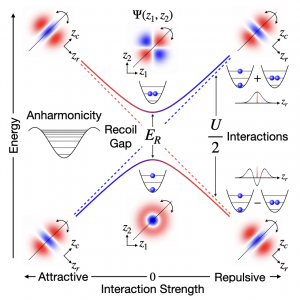Thomas Hartke, Botond Oreg, Ningyuan Jia, Martin W. Zwierlein
Nature 601, 537–541 (2022). download
featured in MIT News

Fermions are the building blocks of matter, forming atoms and nuclei, complex materials and neutron stars. Our understanding of many-fermion systems is however limited, as classical computers are often insufficient to handle the intricate interplay of the Pauli principle with strong interactions. Quantum simulators based on ultracold fermionic atoms instead directly realize paradigmatic Fermi systems, albeit in “analog” fashion, without coherent control of individual fermions. Digital qubit-based quantum computation of fermion models, on the other hand, faces significant challenges in implementing fermionic anti-symmetrization, calling for an architecture that natively employs fermions as the fundamental unit. Here we demonstrate a robust quantum register composed of hundreds of fermionic atom pairs trapped in an optical lattice. With each fermion pair forming a spin-singlet, the qubit is realized as a set of near-degenerate, symmetry-protected two-particle wavefunctions describing common and relative motion. Degeneracy is lifted by the atomic recoil energy, only dependent on mass and lattice wavelength, thereby rendering two-fermion motional qubits insensitive against noise of the confining potential. We observe quantum coherence beyond ten seconds. Universal control is provided by modulating interactions between the atoms. Via state-dependent, coherent conversion of free atom pairs into tightly bound molecules, we tune the speed of motional entanglement over three orders of magnitude, yielding 10^4 Ramsey oscillations within the coherence time. For site-resolved motional state readout, fermion pairs are coherently split into a double well, creating entangled Bell pairs. The methods presented here open the door towards fully programmable quantum simulation and digital quantum computation based on fermions.